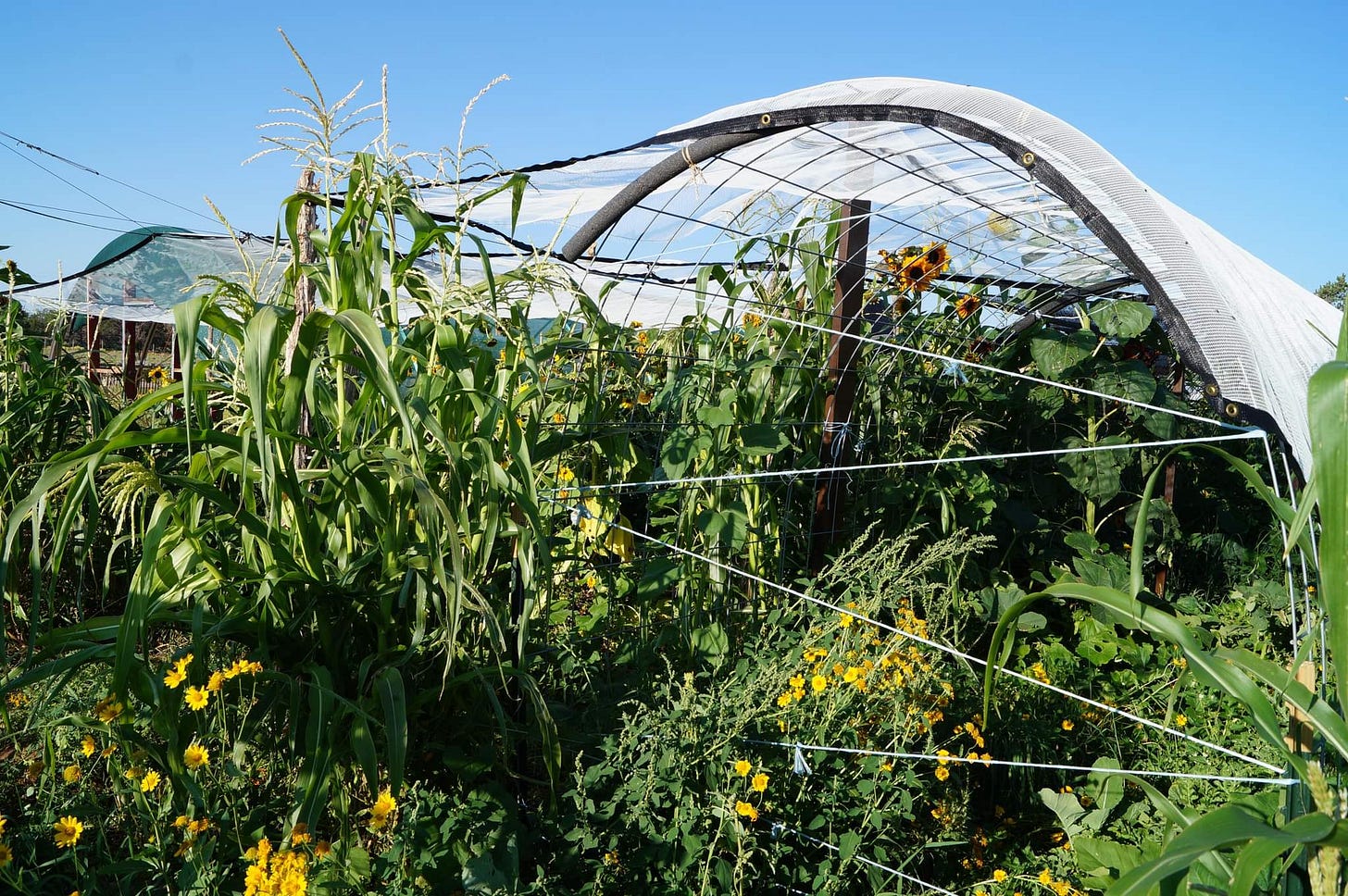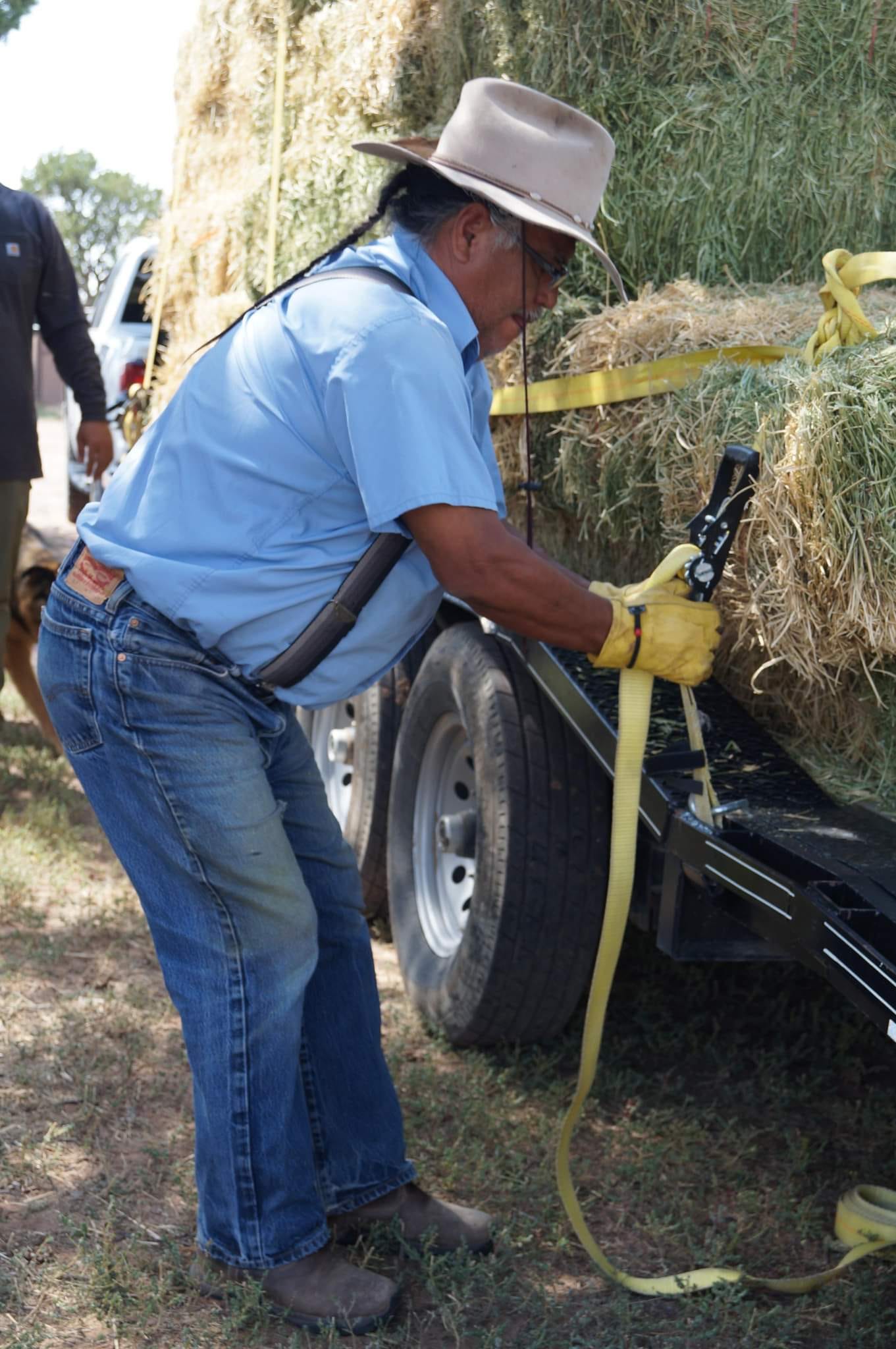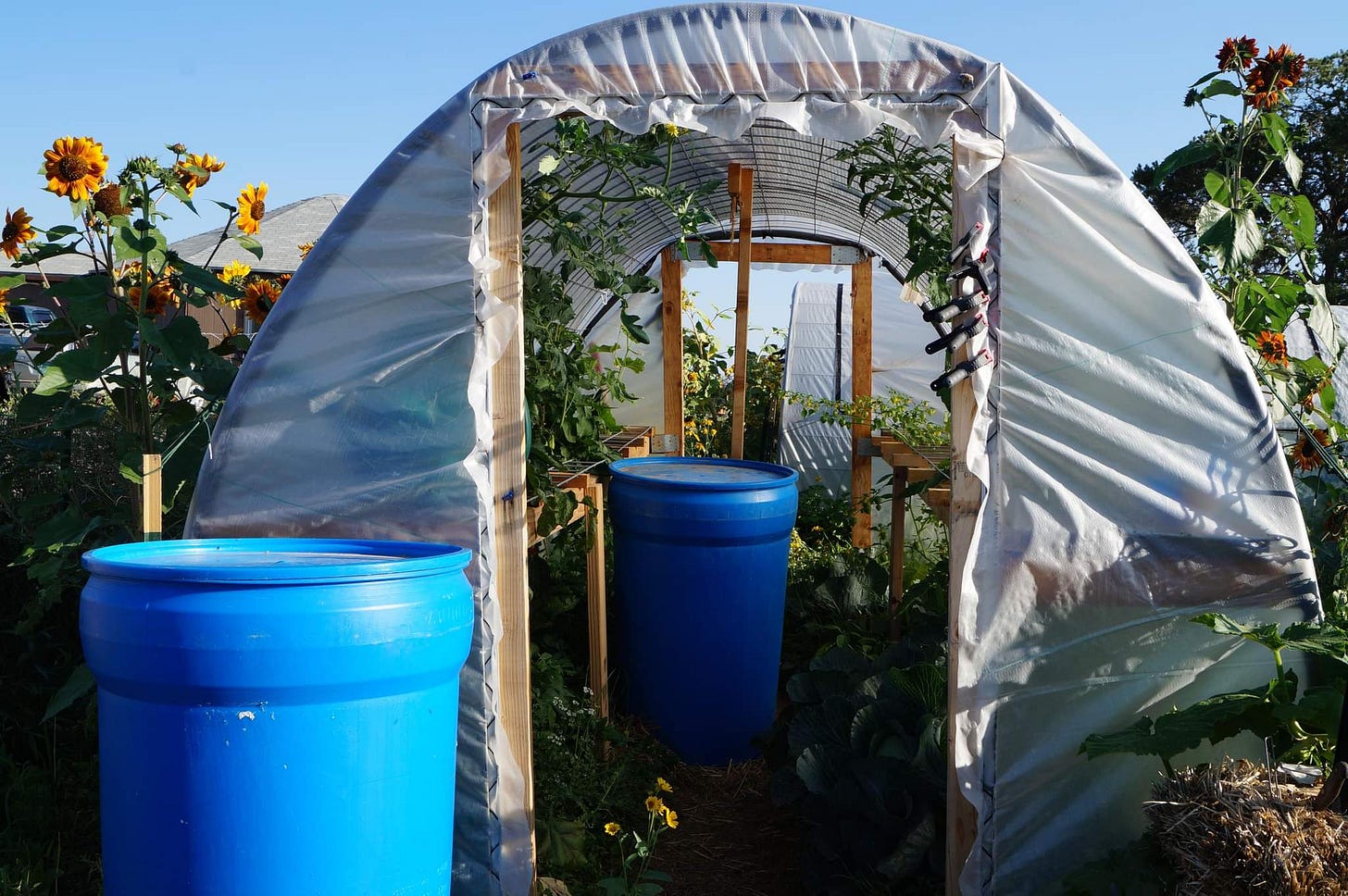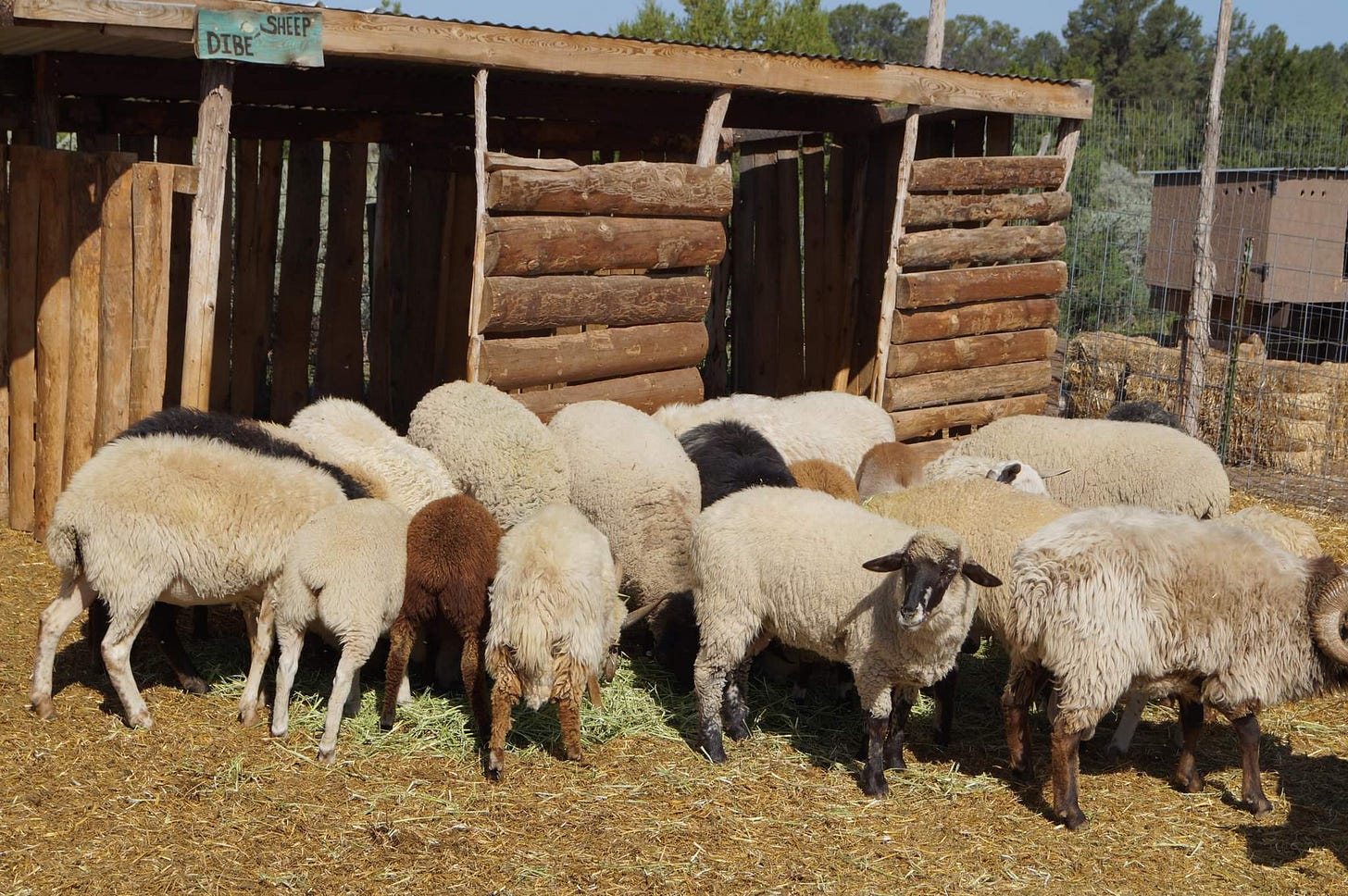What's Your Relationship Status with Soil?
A discussion with James Skeet of Spirit Farm on the importance of soil health, indigenous wisdom, and reorienting our relationship to nature for a better future.
Welcome back to The Link, a bi-weekly newsletter making the connection between “regenerative farming,” and you—city slickers, country mice, and everyone living in the in between—every other Sunday.
That adaptogenic drink full of powdered mushrooms because “self care.” The smoothie that’s “nutrient dense” and guaranteed to “power your morning.” Whether it’s a geo-targeted Instagram ad or standing in aisle 8 at the supermarket, the modern world likes to distract us with notions of “living our best lives” by talking about gut health or “clean eating” that can leave us feeling more hollow than the last crumb in a bag of Doritos. (Spicy Sweet Chili Doritos for the win).
Whether you live in an area where the closest food access might be a Walmart or a packed block in Manhattan, many of us are incredibly reliant upon what grocery stores can supply to us—and the nutrient density of the foods that they offer. Industrial agriculture has grown with the formula that size and weight equals more money. All the while depleting the soil (tbt to the Dust Bowl), Big Ag produces food that is less nutritious: think less protein, calcium, Vitamin C, etc. Well I buy organic/the label says it’s nutritious. I don’t buy conventional.
If those two last sentences are thought bubbles floating through your mind, studies show that while soil and the human gut contain approximately the same number of active microorganisms, the human gut microbiome diversity is only 10% of what it used to be. You don’t have to call up fermentation experts like Sandor Katz to understand that microbes and gut health are not only deliciously funky, but they also help to regulate our immunity and emotional well being. Ditto for soil microbes, which play a key role in determining the nutrient contents of our food.
So if this newsletter is churning your stomach, hold on to your chaga latte, friend. Research shows that regeneratively grown foods foster healthier soil. Translation: Healthier soil produces healthier plants, and healthier plants equals nutritious plants/your gut health is on the upswing.
But this isn’t a science lesson, nor is it some new age lecture on why you should be sourcing particular foods. This is a bend in the bridge of reimagining our approach to thinking about food systems and the impact that our choices (and sometimes, only options) and our relationship to nature can have on our health and well being.
In spring of 2021, I started volunteer farming at regenerative farms around Texas. After a few experiences with farmers who threw around the word “regenerative,” only to observe the integration of one or two components from the practice into their efforts, I was perplexed. Then I freaked out. More than a handful comfortably used the phrase “pioneering a new technique” to describe what they were doing, as if something miraculous had just been discovered. And when I asked them what was new about an ancient practice invented by indigenous communities that have been used around the world for centuries, the responses were often abrupt or riddled with backpedaling or complete silence. Why does something have to be “new” in order to adapt into a better relationship with nature? Besides, it seems like all the “new things” we’ve invented over the past 100 plus years have really fucked things up in a short span of time.
So I stopped volunteering altogether and started researching indigenous teaching farms instead. Through a bit of kismet (and a story that altogether merits its own newsletter), I learned about Spirit Farm, a regenerative teaching farm. Last summer, I got into my Subaru and drove 13 hours until I arrived in Vanderwagen, New Mexico, an area in the Northern part of the state at an elevation of 7,149′, with brittle, desert conditions that make growing anything in its soil more challenging than resurrecting Lazarus. But James and Joyce Skeet, the couple and co-founders behind Spirit Farm, are proving otherwise.
The duo founded Spirit Farm in 2014 as a way to reclaim indigenous farming and spiritual practices while blending modern techniques to establish resiliency. Among the farm’s many purposes, it aims to inspire indigenous communities to grow their own food—one part of health disparities that are tied to historical racial injustice. The farm and the work, wisdom, and efforts of James, Joyce, the Spirit Farm workers, and the community that interacts with Spirit Farm are reestablishing the relationship between nature’s natural systems and people in a holistic way that has existed for thousands of years before us.
I recently sat down with James Skeet to discuss the importance of soil in all of our lives—why it’s something that we should examine, why it is important no matter where you live, and the communal worldview shift that we should walk towards to create drawdown, interconnectedness, and an utmost respect for the lifeforms we coexist with (because let’s be honest: humans are actually no more powerful than microbes when you look through a slightly different lens).
Helen Hollyman: I’d like to start by asking what the word “regenerative” means to you?
James Skeet: To us in the indigenous community, we realize that there is a degeneration that has taken place in the last 150 years. The word degeneration is something natural that has begun to break down. It’s become mechanical, industrial, and factory oriented. The word “regenerative” comes from the word “regenerate”: going back and taking the past, positive, healthy cycles and perspectives that took place before us into consideration. You’re taking a worldview or the indigenous bio cosmology perspective into consideration: the connection between life and the different layers of Earth and its being. As indigenous people, we see those many different layers and how we look at the four directions, the layers of microbes, plant hypha, and as you move up into the four legged, the two legged, and the connection between us all.
So how would you describe getting into a regenerative mindset?
We’ve all been brought up as children and have individually experienced awakenings that took place when we were younger. Regeneration means a lot. It’s movement, and something that you don’t just learn. When you were young, you likely had that peaceful headspace that you entered into where you weren’t about control or trying to make ends meet. But as you grow older, it’s the very mindset that changes. In adulthood, you have to redirect and resurface some things that you might have been exposed to that are further away from that childhood awakening.
Okay, so let’s start with the soil. Why is it so integral in the conversation of regeneration and regenerative farming?
When my wife Joyce and I moved back to our property here at Spirit Farm, we began to look backwards in order to reconnect to the way that my parents and my grandparents before them used this land. And as I thought about what it was like for them in the 1950’s and 1960’s, a lot of the experiences that my relatives faced are things that I am also encountering just like the ancient people long before us. They were also intent on making sure that there was “hozhoo,” peace, and that they had the ethics to look towards their grandchildren’s futures and how that movement would take place.
My grandfather held the soil in a much more conventional, dominating way with a tractor, which was a key demise of kinship in our community. It began to degenerate because where it once took a number of community members to take the planting stick and puncture Mother Earth and plant those seeds that came before, now it only took one person to plow the field instead. Now that the tractor had been introduced to plow the fields, he quickly put corn in, beans, and squash. He became very entrepreneurial with it—his name was Money (which is an interesting story on its own). But getting back to the soil business, when people stop farming is when a lot of the connectivity, like the interaction between fungi and mycorrhizae in the soil, ends.
When I was young, I remember Money using horses. I’d work with him while he’d plow the fields. I’d soak in the sweat of the horses and plant a lot of the corn. I eventually saw him move into using a tractor. When I saw that transition take place, the tractor compacted and tore up the soil, whereas the horses hooves were previously more nature friendly. Each year he plowed, the soil became harder and less sufficient in fertility. I saw him slowly move away into submission, not only with his age but also with the capacity of the Navajo people who had roamed the land, all of the sudden, they were building fences. And as they built fences, they were breaking up the nomadism of the sheep and the animals from summer camps to winter camps. That further detachment later became real when the overgrazing took place in these plots and further detachment of Navajos no longer eating sheep anymore, but buying them from other traders instead, which were raised in pens.
What was the process of healing the soil at Spirit Farm like? What was your approach, and why was it important to do so?
Seven years or so ago, I’d hike a lot on a lot on the acreage that we had, and I’d see remnants of corn cob and thistles and how harsh the environment had become. I saw fences breaking down from people moving into urban areas and wild horses taking over. Joyce and I looked at each other and said “When we leave this earth, we want this land to be in better shape than when we came in” and to me, that’s the mission of regenerative farming. In that effort, you have regenerated or remediated the land. And in just seven years, we’ve seen the outcomes of nature responding.
Nature is really sovereign, just like our bodies are sovereign. It will hold up and become resilient and it will do all it can to survive. And that’s understanding that the soil is much like the earth’s connection in good or ill health. In the context of a worldview of systems of industrial mechanical conventional farming versus the organic indigenous mindset, you have these two polar opposites at odds with each other. I feel that my hopelessness is starting to swing towards an indigenous regenerative intelligence: moving away from the dominant perspective of maintaining systems that don’t work for us. It’s that mindset that has to shift in order for us to understand that a lot of things are connected. What we do on this marginal side is the same context that we have about the soil and the gut.
Gut health and soil health are so intrinsically connected, but why don’t we talk about that more?
In conventional farming, using chemicals to produce faster results, such as drying wheat rather than chemicals original purpose, to kill, are very American. When we talk about subjects like meat production, oftentimes the animals are dosed with antibiotics, and there’s two reasons why: They put them in pens and a lot of diseases spread quickly. But in that process, just like the wheat, these ranchers realized that when you hit the animals with antibiotics, they get big and fat. So the intent of that was to fatten them up and be a heavier weight and sell at a higher price. I think the ramifications of these side effects are a result of how we’ve looked at nature. We’ve contaminated the soil through monocropping and we’ve moved a lot of the microbial activity to where we’re a chemistry based and not a biology based farming society, but when we’re talking about the soil, we’re talking about life.
What are some questions that we should be asking ourselves when we begin to unlearn the relationship that we have had with the land?
What is the life of that soil? How does soil become alive again—not by putting chemicals in there and thinking that that’s the way you can control nature. It’s the other way around. At Spirit Farm, we’re realizing that we’ve made some major mistakes that we’re trying to undo. It takes about five years for a farmer to change their mindset. I don’t think that we have that much time. My grandfather pushed the desertification of our land further by plowing and using the soil without any reciprocity exchange. It was a relationship of extraction. And when Joyce and I came back to that soil, which was full of sagebrush and unwanted weeds, we tried to reconnect with the land to understand the intelligence of the land. We put ourselves in a type of spiritual prostration by laying on the land and asking “What do you need to teach us? What do we need to learn from you? What should our hearts attune to? How can we listen again? How can we not determine the degeneration? How do we even begin to approach these things in a sacred manner?”
Did you find some answers?
People started showing up in our lives that we didn’t know and were asking some of the same questions. Healers were coming out of the woodwork and then the pandemic hit. We realized that that was nature speaking to us in signs and wonders and we didn’t have enough spiritual leaders to interpret what those meant. But the more I looked into that discussion, we started seeing native healers come out of the woodwork. Somehow we crossed paths and they’d end up on Spirit Farm, and they would speak spiritual things to us that we needed to hear. We went from decolonizing ourselves into indigenizing ourselves.
I see the microbial gut dysfunction that I have in my own body related to the soils that have been degraded and the things that have been fed through the dependency on our economy. The way in which this country was built is really based on food security. The natives came and helped the Europeans with that food security. So you can go back and reiterate these things, but I think that soil is really key, because it establishes that kinship that I’m seeing when we help other farmers around us.
We’re constantly asking, “where is the reciprocity?” when we are looking at these things in an interconnected way. That’s what's happening between tribes in the area now: each farmer is open to interpreting the intelligence of the land but also constantly challenging their paradigms so that they are not moving back into conventional farming. Their mindsets are changing into an understanding with the kinship with the microbes, and that’s probably more important than anything else. Understanding what those microbes are doing: how they’re creating the medicine as the plant hypha takes it up, and when we eat those plants, it has the nutrient density and is able to heal things like “leaky gut syndrome” in a natural way. That’s all we’re talking about in indigeneity: how are nature’s natural cycles happening all around us, and how do we step back into that portal?
Outside of tribal communities, how would you interpret what has happened in food systems across the country?
In an industrialized, colonized system, it’s been broken apart and we have reduced things down into smaller parts, ignoring their interconnection. I think that’s why we’re having a hard time understanding this ancient biosystem. We need to regenerate from a far sightedness into a near sightedness in order to change. Animals have different lenses. The predator’s lens, like that of a wolf, is small and round. It’s looking for how to attack. But when we look at a sheep’s pupils, they are horizontal, looking from side to side, making sure that whatever's on the land stays on the land and helps them know where the plants are that help them to medicate themselves. When we consume the sheep, how we take that energy from them into us is positive. It moves through us to help nature continue in its cycle instead of being extractive and oppressive. It's a give and take.
Thanks so much for speaking with me!
To learn more about James and Joyce Skeet and Spirit Farm, you can visit their website. Spirit Farm has been featured in The New York Times and The New Humanitarian. You can donate to their incredible work here, and don’t miss out on subscribing to the Spirit Farm newsletter.
Oh hey! You’re still reading this? If you have future topics, smart humans, or concepts you’d like to see featured, respond to this newsletter or drop me a line and say hey: Helen@HelenHollyman.com.
If you liked this post from The Link, I dare you to share it!







